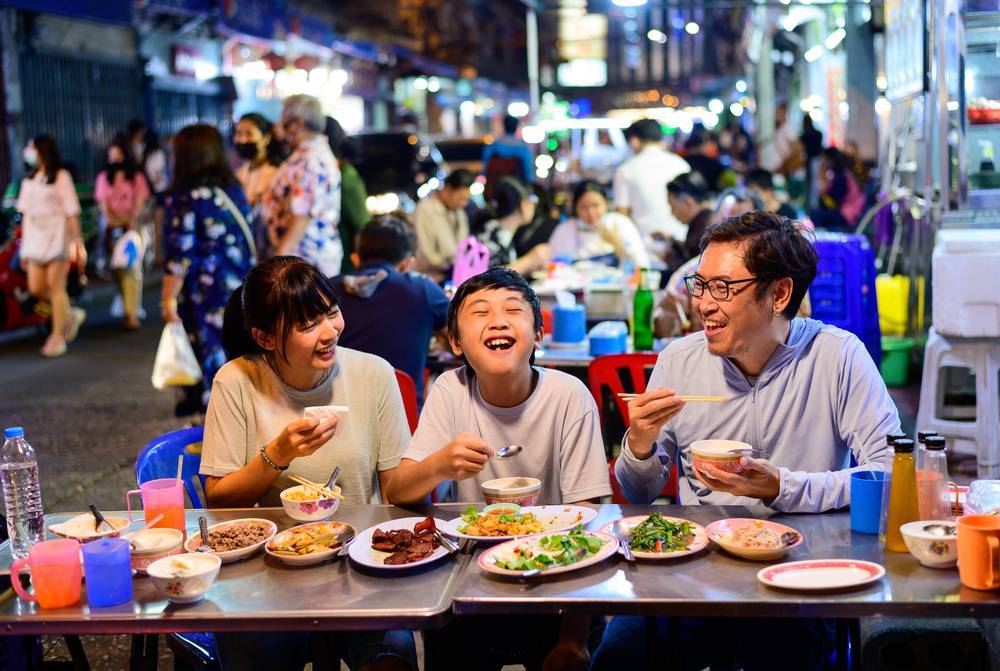Food allergies are a growing concern in Asia, affecting millions of people. An allergic reaction can be severe and potentially life-threatening, making it crucial to know the most common food allergens and how to avoid them.
Here are the top five food allergens in Asia, their prevalence, and what you need to know about them.
Peanuts
Peanut allergies are one of the most common food allergies in Asia, affecting up to 1.7% of the population in Asia. According to research, peanuts are the most common cause of anaphylaxis, a severe allergic reaction. Symptoms can include difficulty breathing, swelling of the throat, and low blood pressure.
Asian dishes that have peanuts
Pad Thai: a Thai stir-fried noodle dish that often contains crushed peanuts. Substitute with cashews, almonds, or sunflower seeds, or order without peanuts.
Kung Pao chicken: a Chinese stir-fry dish that often includes peanuts. Substitute with cashews or almonds. This dish also works without peanuts
Shellfish
Shellfish allergies are also prevalent in Asia, affecting up to 2.1% of the population. Common types of shellfish include shrimp, crab, and lobster. Symptoms of a shellfish allergy can range from mild to severe, including hives, stomach pain, and anaphylaxis. It’s essential to read food labels and ask about ingredients when dining out.
Asian dishes that have shellfish
Shrimp tempura: a Japanese deep-fried shrimp dish. Substitute with vegetable tempura or other non-seafood tempura options.
Tom yum soup: a Thai hot and sour soup that often contains shrimp or other shellfish. Substitute with a vegetarian or chicken version.
Milk
Milk allergies are the third most common food allergy in Asia, affecting up to 2.5% of the population. Symptoms can include hives, swelling, and vomiting. Avoid dairy products if you have a milk allergy, including milk, cheese, and yogurt. There are plenty of dairy-free alternatives available in grocery stores, such as almond, soy, or coconut milk.
Asian dishes that have milk
Bubble tea: a Taiwanese tea-based drink that often contains milk. Substitute with non-dairy milk options such as almond, soy, or coconut milk.
Yogurt-based drinks or desserts: avoid these dishes altogether or substitute with non-dairy yogurt options.
Soy
Soy allergies are also common in Asia, affecting up to 0.5% of the population, particularly in children. It is a common ingredient in many Asian dishes and processed foods. Symptoms can include hives, itching, and anaphylaxis. Look for soy-free alternatives when grocery shopping, such as legumes, grains, or nuts.
Asian dishes that have soy
Soy sauce-based dishes: many Asian dishes, including stir-fries and marinades, may contain soy sauce. Substitute with alternative sauces such as teriyaki or hoisin sauce, or use gluten-free soy sauce..
Miso soup: a Japanese soup made with soybean paste. Substitute with other types of soup or choose a version without miso paste.
Eggs
Egg allergies are another prevalent food allergy in Asia, affecting up to 1.3% of the population, particularly in children. Symptoms can include hives, swelling, and difficulty breathing. Avoid foods that contain eggs, such as baked goods, pasta, and processed foods. There are plenty of egg-free alternatives available, such as applesauce, mashed bananas, or commercial egg substitutes.
Asian dishes that have egg
Egg fried rice: a popular Chinese dish that typically includes scrambled eggs. Substitute with a vegetable or meat-based fried rice, or order without eggs.
Baked goods: many Asian baked goods, including mooncakes and egg tarts, may contain eggs. Substitute with egg-free versions or choose different types of desserts altogether.
What to Do If You Have a Food Allergy
If you have a food allergy, it’s crucial to take steps to avoid exposure to the allergen. Always read food labels, ask about ingredients when dining out, and carry emergency medication, such as an EpiPen. If you experience symptoms of an allergic reaction, seek immediate medical attention.
In conclusion, food allergies are a growing concern in Asia, and it’s essential to know the most common food allergens and how to avoid them. By being aware of these allergens and taking steps to avoid exposure, you can reduce your risk of an allergic reaction and stay safe and healthy. Remember that there are plenty of alternative foods available that are just as delicious and nutritious as the allergenic ones.

